Don’t Lecture Me
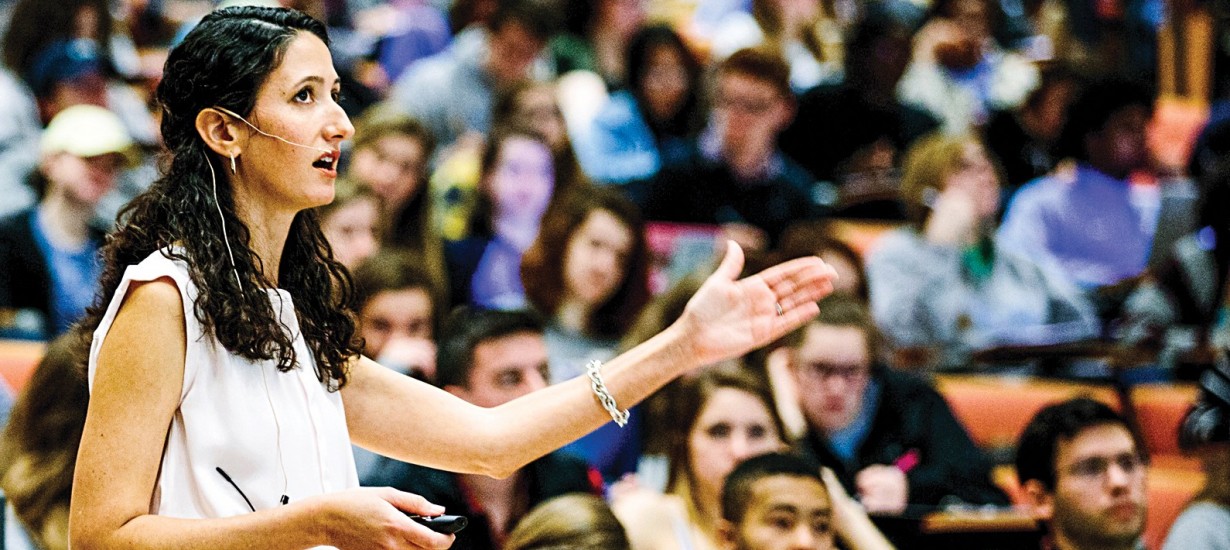
Kelly Hogan ’01 (PhD) took some troubling statistics on student success and turned them into a new college classroom at Carolina: less talk, more action and deeper learning.
by Beth McNichol ’95
A striking fact about attending a lecture in Kelly Hogan’s introduction to biology course is how little you hear of her voice. It’s a warm, Brooklyn-born, New Jersey-raised voice, but it is not the star of the show. It’s a supporting actor that pops in among moments of murmuring quiet and crescendos of small-group learning to offer direction to the 416 students — many of them freshmen — who make up one of the three largest course sections at Carolina.
Two minutes into this 9 a.m. Monday class, Hogan ’01 (PhD) asks her students to draw graphs and equations on the outline notes provided to them. A minute or two of quiet intercedes as they work individually on the problem before Hogan, the senior STEM lecturer in biology, gets their attention again:
“With your hands, show me what exponential looks like on your graphs,” she says, watching for 400 arms to make a swooping J gesture.

A show of fists tells Hogan her students are engaged and they get it. She never allows herself to lecture for long — pausing to compel students to respond, individually and in groups. (Photo by Anna Routh Barzin ’07)
She talks for another two minutes, introduces a slide with a new problem and asks the students to consult with a neighbor and develop solutions to the question of controlling deer populations. Now the classroom becomes noisy, like a high school cafeteria, as Hogan strolls up and down the stairs of the cavernous lecture hall, watching and listening to the students brainstorm. They know she might call on them to answer — “In the blue shirt, what did you come up with?” or “Choose the person who most recently ate a beef hamburger in this group to report what you’ve found” — so the talk that ensues is not about their weekend.

Hogan walks the aisles and interacts with students during her lecture. (Photos by Anna Routh Barzin ’07)
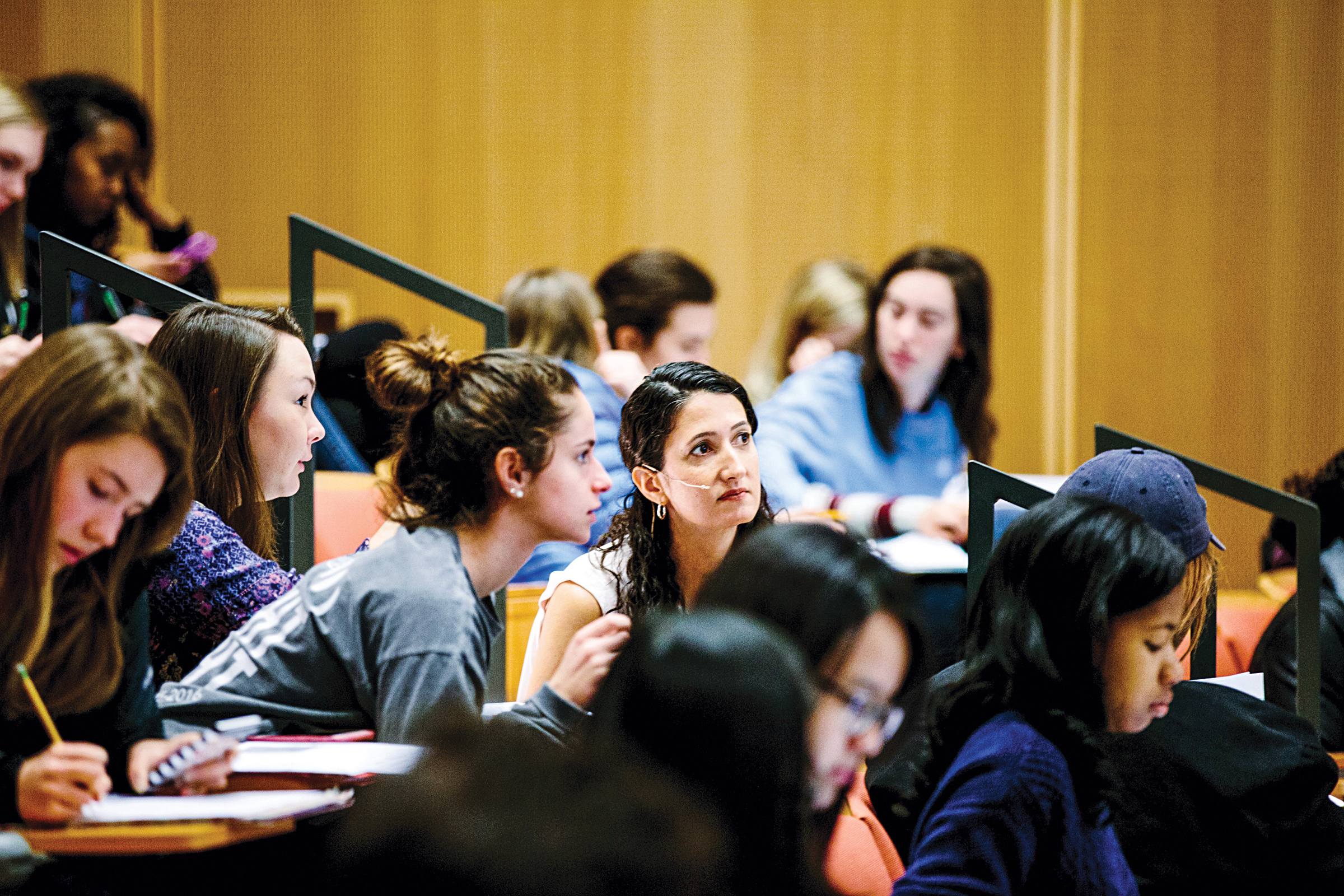 For 50 minutes, this rhythm of give-and-take keeps students awake, engaged and on their toes, and it helps Hogan understand whether her teaching is taking hold long before her students take her first exam. Several times during class, she presents a question on the screen to which her students must respond, using their laptops or smartphones, through an online polling service called Learning Catalytics.
For 50 minutes, this rhythm of give-and-take keeps students awake, engaged and on their toes, and it helps Hogan understand whether her teaching is taking hold long before her students take her first exam. Several times during class, she presents a question on the screen to which her students must respond, using their laptops or smartphones, through an online polling service called Learning Catalytics.
Hogan sees the real-time responses at the lectern; if the results show that too many class members don’t understand — that her teaching hasn’t gotten through — she gives the whole class another chance to puzzle it out with a peer, not unlike two scientists collaborating on research in the real world.
The result is a class that crackles with an energy palpably different from traditional lecture courses, where — no matter how many different colors of chalk or dry-erase markers, no matter how vibrant the slides, no matter how charming the storytelling — the construct still boils down to one individual speaking the contents of his or her mind to a sea of passive students.
Across the country, that broadcasting construct seems headed for antiquity, nudged out by the progress of cognitive science research and the evidence that highly structured and active learning — like that which happens in Hogan’s Biology 101 class — is the way that students learn best.
Is it a gimmick, a phase? Hogan says no.
“This is the new normal in education,” she said, and at Carolina, she is leading the charge for change.
It’s not you, it’s me
Hogan’s new normal began one day in 2010 when Bob Henshaw ’86 (’96 MSIS), an instructional consultant at UNC’s Center for Faculty Excellence, placed a troubling collection of statistics on her desk. They showed that underrepresented students — blacks and first-generation college students — were disproportionately scoring Ds and Fs in her classes.
Teaching was by then Hogan’s primary role in the biology department. She always intended to have a career in both instruction and research; after earning her doctorate in biology at Carolina, she completed a postdoctoral research fellowship that included a teaching component. But the more she taught, the more she was drawn to helping students succeed. After her son, Jake, arrived in 2003 and the Hogans’ adopted daughter, Lexi, joined the family from Guatemala in 2006, a nontenure, teaching-track faculty job became a practical solution to juggling family life.
But Hogan is a scientist through and through, from her precise articulation of thoughts to her penchant for assessing the room. Henshaw’s statistics started her internal research engine once more, this time in the field of social science. She set to work discovering ways to combat the achievement gap that had been revealed in her class. She started with herself.
“The vast majority of research faculty, and even some of the teaching faculty, have Ph.D.s but haven’t been through formal training for teaching,” Hogan said. “None of us were trained to do this.”
Hogan read education papers; she attended workshops on cognitive science; she took advantage of a growing body of knowledge already available that supported the national movement to create active-learning college classrooms. She believed she could create an environment that would do more than just spew content; it would grow 400 active minds.
She coupled two ideas: in-class interactive problem solving using moments of both quiet analysis and group work, a format in which she would lecture for only a few minutes at a time before handing the action back to her students; and a more structured course model. Before class, students were expected to read textbook assignments and answer the guided reading questions Hogan provided. They had to come to class prepared to put into practice what they had first encountered in the text.
The result is a class that crackles with an energy palpably different from traditional lecture courses, where — no matter how many different colors of chalk or dry-erase markers, no matter how vibrant the slides, no matter how charming the storytelling — the construct still boils down to one individual speaking the contents of his or her mind to a sea of passive students.
And Hogan contacted students who did poorly on her first exam, asking them to meet with her to work on ways to improve their performance.
The results were a success: While all students lowered their failure rates in the new model, first-generation students closed their achievement gap entirely and black students narrowed it considerably — from a gap of 5.5 percent to 2.6 percent. Since then, Hogan has added another layer of structure to her class — post-class review homework — which as-yet-unpublished data show has erased the gap for black students, too.
Likewise, students who took advantage of her offer to meet with them improved their grades over the rest of the semester compared with those who did not.
Hogan and research partner Sarah Eddy of the University of Washington-Seattle published their work to widespread acclaim in 2014; they were the first to show how active learning positively affected minorities and first-generation students in STEM classes — students who, once discouraged, often abandon their science majors for non-STEM fields.
The research ultimately sparked a campus movement that would ripple throughout STEM classes at Carolina. Laurie McNeil, the Bernard Gray Distinguished Professor in physics and astronomy, had implemented a lecture/studio hybrid course format in response to concerns that physics students across the country could pass tests but could not pass muster in the profession.
That theme became a rallying cry for Hogan, too, who was named the director of instructional innovation for the College of Arts and Sciences in 2014 and won the Tanner Award for Excellence in Undergraduate Education in 2015.
“As an institution, we have always thought that we have to teach content,” she said. “But really what you’re seeing in educational transformations across the country is: We need to teach how to be scientists. We need to teach how to be historians. And those professions don’t just memorize formulas and dates. They need to be able to synthesize and evaluate.
“These are the same things that all professions use, that all researchers use. So we’re talking a lot more about what are the authentic skills that our students are going to need and less about what concepts they need. We can use fewer core concepts to teach them in the field — but to really dig into the skills, which are often forgotten in classes.”
The courage to change
Michael Crimmins, the Mary Ann Smith Professor of chemistry and a Tanner Award winner himself, has been a faculty member at Carolina for more than three decades and was the senior associate dean for natural sciences when news of Hogan’s findings came bubbling up across campus. (Crimmins is Carolina’s 2016 winner of the UNC System Board of Governors’ Teaching Excellence Awards.) But after serving on a committee to transform large lecture courses with Hogan in 2012, the veteran was convinced he needed to change the way he had been teaching.
Crimmins became the first Carolina faculty member to enroll in a new STEM-based apprenticeship/mentorship initiative the campus was rolling out through a grant project with the Association of American Universities. Crimmins was paired with Jennifer Krumper, a lecturer in the department, to train in interactive classroom techniques. With her help, he spent close to two years revamping his organic chemistry course — including recording 180 video lectures, each running five to 15 minutes, for class homework.
“It was really kind of a unique experience,” Crimmins said of the arrangement, which he acknowledged has the potential to be “a really challenging and difficult relationship, between a senior and distinguished professor and a nontenure-track fixed-term faculty member. The first thing that you have to do is check your ego at the door and say, ‘I’m going to try to use the experience I have, but approach this from the point of view that I don’t know that much about this particular way of doing things.’ ”
Hogan said Crimmins’ open mind was essential to spreading enthusiasm on campus for active learning.
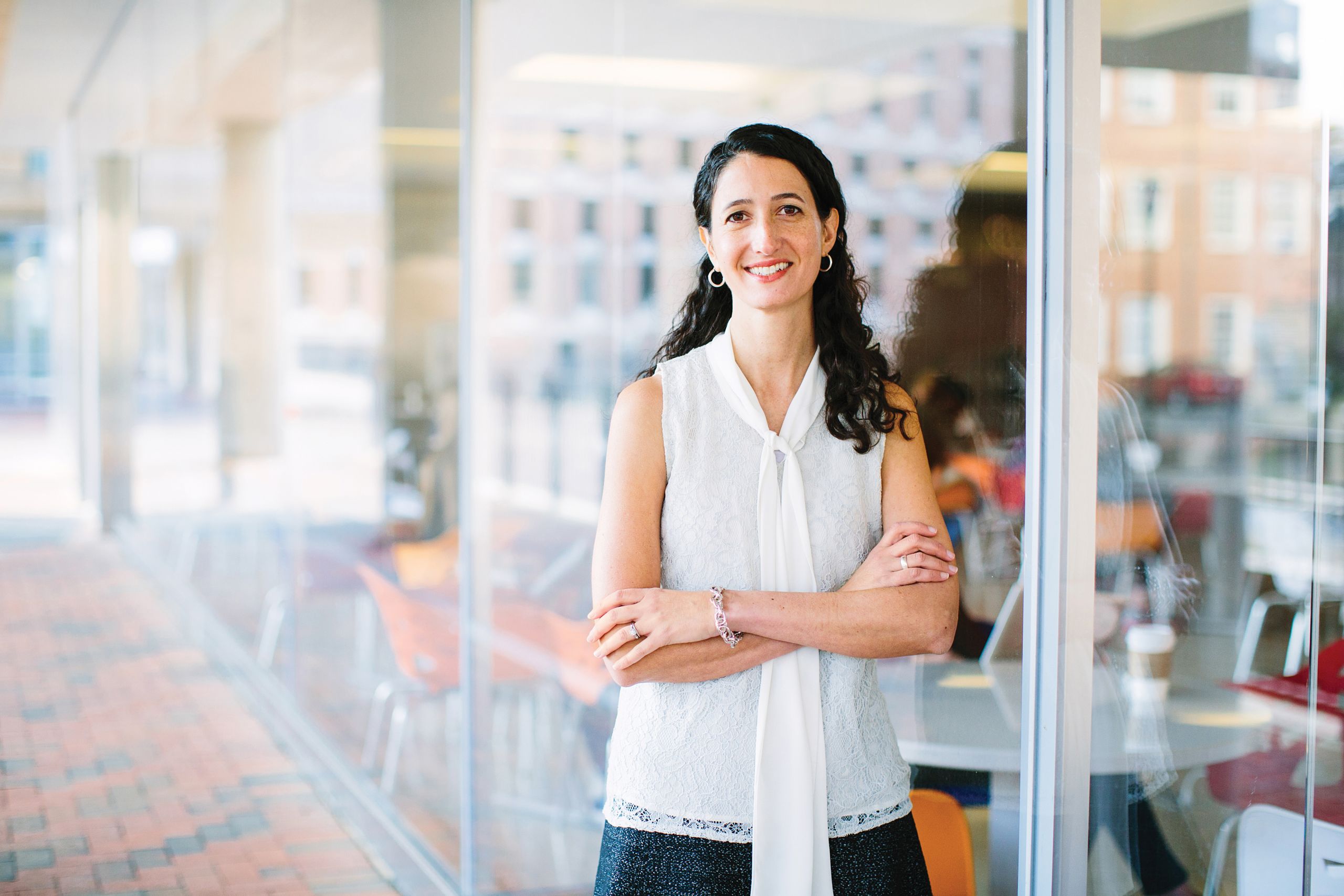
“When you let students into your life, they see you as people. Our students that we mentor, who babysit for us, they see our lives, and Carolina becomes a much smaller place,” Hogan says. (Photo by Anna Routh Barzin ’07)
“It feels threatening to change what you’ve been doing,” Hogan said. “It takes time and effort. It takes vulnerability to admit that maybe this isn’t the best way or that it’s going to be hard work. [Crimmins’ decision] really set the tone right away, that the senior administrator was saying: ‘I don’t know. Help me.’ That sends a really large message and takes away all of the hierarchy of how things work. It was just a great starting point.”
Like Hogan, Crimmins uses real-time polling techniques and call-on-the-student questioning.
“It’s a lot more fun,” Crimmins said, “because I feel more connected to the students than I did before. And they feel like I’m more approachable than I was before. It’s more personal and less institutional.”
The techniques get some people to thinking of the “flipped classroom,” the reverse of the typical pedagogical model, in which students watch video lectures at home and class time is spent on exercises and discussion.
Hogan, in describing her approach, seemed to prefer the term “accountability.”
“Watching a video can be passive … thus, I think a mix of reading, problem solving and tutorial videos are best,” she said. “If I ask students to read before class but don’t require it with an assignment, then they won’t do it. And they certainly won’t be ready for hard problems. They might have no incentive to practice after class either.
“I require homework before class, I require participation during class, and I require quizzes after class. During class, I use a variety of active learning and inclusive methods to help students see where they are in their learning and to provide me with data about the learning.”
By May, 25 faculty members across four departments will have gone through the training program as apprentices: in biology, chemistry, physics and mathematics.
But the changes are not limited to STEM instructors. The UNC Center for Faculty Excellence in 2012 introduced a grant program in response to Hogan’s work, the CFE 100+, which offers stipends to professors who wish to restructure their large lecture courses. Since then, 53 tenure- and nontenure-track faculty have received grants, including participants from economics, anthropology, women’s studies and history, among others.
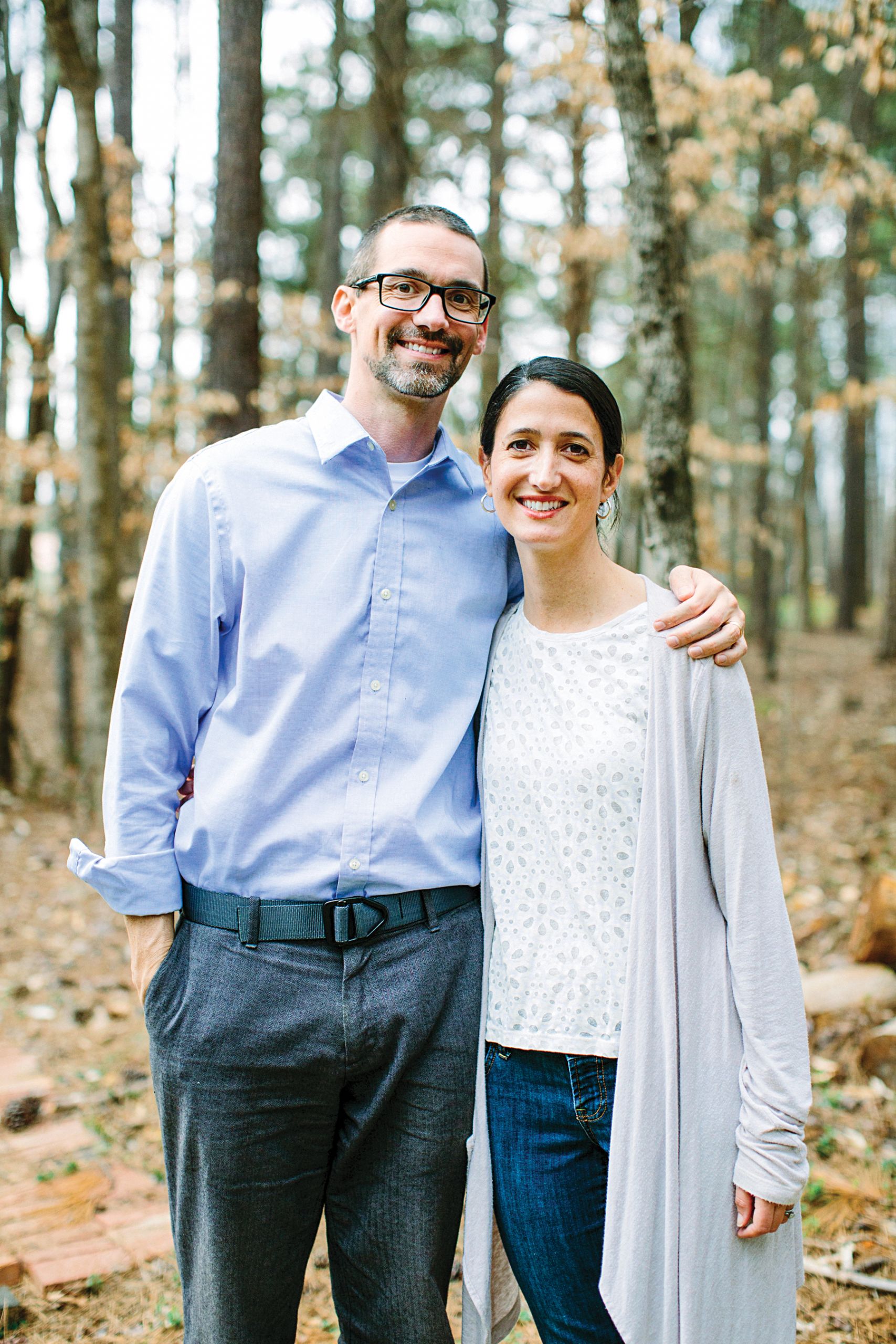
The first thing Brian Hogan noticed about Kelly was that he couldn’t match her academically. Now an assistant professor of chemistry, he also helps administer the Carolina Covenant. (Photo by Anna Routh Barzin ’07)
A student then, a student now
Hogan’s own college experience differed greatly from many students she now teaches — and many of her peers in college.
She was the daughter of a middle-school social studies teacher and mastered studying and time-management skills before most of her peers at Trenton State College, from which she graduated summa cum laude in 1996. Her husband, Brian ’03 (PhD) — who’s a UNC research assistant professor of chemistry — first encountered Kelly in a freshman introduction to biology course there, two years before they began dating. What he remembers from that class, after Kelly scored 107 on their first exam, is a lot of this from the professor:
“I want to draw your attention to the young and lovely Kelly Lee … you should all end up as smart as the young and lovely Kelly.”
“Those were his exact words,” Brian recalls. “I sat in the front and wanted to be called on, but Kelly sat in the back because she just wanted to be anonymous, she didn’t want to be called on. She just went six shades of red.”
“I did,” Kelly said, sinking down in her chair as she confirms the story. “I was like, ‘Shhh!’ ”
(For the record: “I would have been scared to death to be called on in a big lecture class as I do with students now,” Kelly said. “But research says it’s the right thing to do. If you allow people to self-select, you get a lot of bias in the classroom — and generally white males are the ones who are going to raise their hands.”)
For his part, Brian figured he could do better than his future wife on the next exam. He didn’t. Instead, the professor pulled him aside and put him on notice.
“He said that if I didn’t show as much potential as Kelly Lee then I was going to be in deep trouble with him,” Brian said. “And so, after a few years of not ever being able to eclipse Kelly on an exam, I went with: If you can’t beat ’em, date ’em.”
“And then you got your first 4.0,” she said, teasingly.
Kelly showed early on that she was gifted at reading the usefulness of an educational environment. She was so exasperated by her introduction to chemistry class as a freshman that she stopped going to class, studied on her own instead — and still scored better than everyone else.
“The instructor was making all kinds of mistakes,” she recalled, “and I was just disgusted by the behavior of my classmates. They were so helpless and eye-rolling and mad and doing nothing to make the situation better. So I went to the library instead. I really came to recognize that with a good textbook and discipline, most people can teach themselves a lot. That’s the model I use with my students.”
Years later, at Carolina, she also came to recognize that the way she saw the world was vastly different from that of her students. And it changed her.
“I grew up in a fairly white community,” said Hogan, who is from Monmouth County in central New Jersey. “Pretty privileged middle class, and as you get older you realize how much privilege you have. All the way through college, I interacted with a lot of people who had a similar background. But then you become a teacher, and you meet everybody. I started to really admire the people I was meeting. They were so young, but the things they had overcome were inspiring.”
Hogan learns best teaching practices from her students and gains their trust by acknowledging their differing worldviews. Jessica Diggs ’14 was a freshman who’d had a tough time in her first semester at Carolina; despite having taken a year of college classes while in high school, earning top marks in them, the Greensboro native and Carolina Covenant Scholar failed her first chemistry course at UNC. She thought about switching majors.
And then she took Hogan’s biology class, where the structured learning — including the presentation of typical test questions during lecture time — helped her pull back what she often saw as the impenetrable curtain of higher education, of exam content that always seemed to be written for an audience that did not include her, an African-American from a low-income family.
“You never knew what the professors wanted on exams [at Carolina],” said Diggs, who is now a doula awaiting medical school in Los Angeles. “I literally have had classes or teachers where I answer a question correctly according to the content, and then find out later there was one word they wanted me to include that I did not. I appreciated that [Hogan] already introduced to us what she was thinking, what she wanted us to get out of the material, well before the exam.”
Furthermore, when Diggs aced Hogan’s first exam with a 99 percent, Hogan summoned her and a few other students to her office hours to ask them their opinions: What could Hogan do to help their classmates who were still struggling? And Diggs often heard from Hogan after the course was over, when Hogan had a question about whether a particular problem she wanted to use exhibited bias.
“It stuck with me that she wanted to know what worked for the students,” Diggs said. “It wasn’t just: ‘You get an A, go. …’ It was, ‘Teach me what is working for you so that I could help others, so I can replicate this in the future.’ ”

Jesus Gonzalez-Ventura, a Carolina sophomore and a student of Hogan’s, with the Hogan children, Lexi, left, and Jake. (Photo by Anna Routh Barzin ’07)
Hogan also learns from her own children’s elementary and middle school teachers, including the philosophy that says, “We don’t have to be the best dancer, but you want to at least be able to do the steps.”
“They’re so explicit about their love for the children and their belief in the children,” Hogan said. “We should be more explicit in our belief in all of these students. Schoolteachers give the students multiple opportunities to succeed, and a lot of the philosophy in college education should be that way. So before they come to my class, they get multiple chances [through homework] to see if they can do what they’re supposed to do, and they only lose a point, a half a point, if they make a mistake.”
But Hogan’s classes are challenging because she demands interaction from her students. Sophomore Jesus Gonzalez-Ventura discovered a marked difference between Hogan’s classroom and, say, the computer science class he took the same semester — a large class with a lecture “that everyone had stopped listening to” by the time the professor asked for questions. The same was true with his chemistry class, in which he applied the learning skills he’d honed in Hogan’s class even though it was structured traditionally.
“If you didn’t keep up with the work in Hogan’s class, you struggled,” Gonzalez-Ventura said.
“But because I did well in her class and because of the way her class teaches you how to study, I feel I can do — and I have done — well in science classes since then.”
On the first day of class, Hogan also has students exchange contact information with four other students sitting near them; those people become a kind of work and support group within the classroom and beyond. The groups force classmates to interact with peers from backgrounds they may never meet otherwise.
“That’s sort of the gist of my teaching: If you want a student to do something because it’s good for their learning, you have to hold them accountable for it,” Hogan said. “And when we think about diversity and inclusion, it’s not enough just to have that philosophy.”
For Gonzalez-Ventura, a first-generation student who was working 30 hours a week to help support himself and had little time for a social life, those students also became friends.
“The people who I know best on campus are from that class and from my other classes that are framed the same way as Bio 101,” he said.
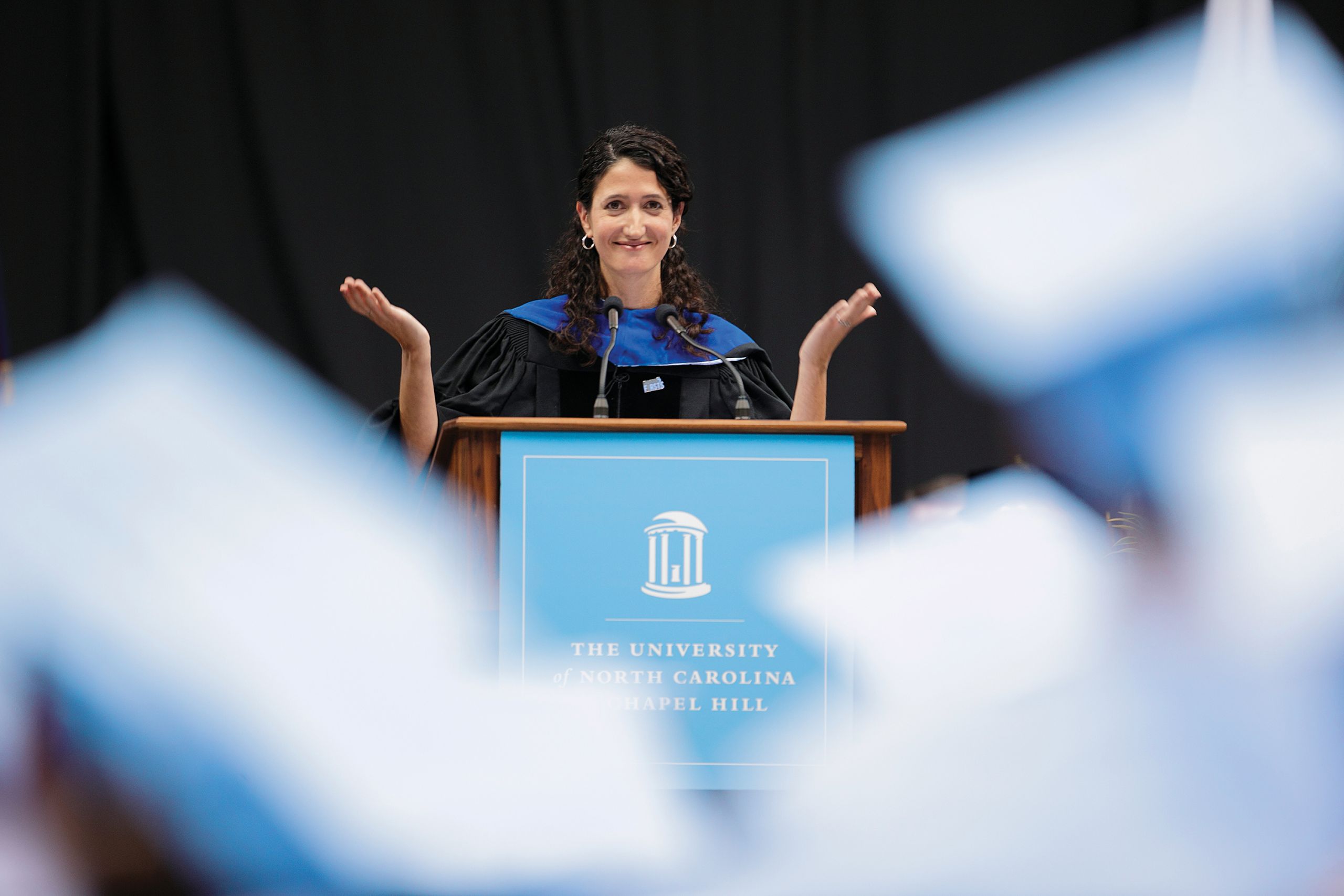
Hogan delivered December’s Commencement address, an honor reserved for outstanding members of the faculty. (Photo by Jonathan Drake)
Hogans as heroes
Hogan is a recognized rising star at Carolina; she was the pick for December’s Commencement address. And the Hogans, who married in 1999 while pursuing their doctorates at Carolina, are a kind of power couple in teaching the sciences at Carolina.
But deeper still is their involvement with student well-being. After authoring biology textbooks used at 700 schools nationwide, Kelly became acutely aware of the money she was asking students to spend on her work; a STEM title can range from $200 to $400. Brian, too, recalled having to choose which textbooks he could buy and which he would have to forgo in college.
Together, they began the UNC Hogan Book Awards last year, partnering with Pearson Publishing to help lighten the load for a handful of first-generation students annually.
With colleagues Abigail Panter and Viji Sathy ’96 (’01 MA, ’03 PhD), Kelly is putting together personal safety workshops on campus to help recognize troubled students and to spot and prevent potential problems.
And with the almost 1,000 students they teach between them each semester, the STEM scholarship program recipients they mentor and Brian’s role as the faculty academic coordinator for the Carolina Covenant Scholar program, college students are in the Hogans’ home and their offices and calling on the phone on a regular basis. Students eat dinner with the family and babysit for the Hogan kids, and they rely on the Hogans for emotional support for the commonplace challenges of college life, and for damaging experiences like sexual assault.
“Carolina is a big place,” says Brian, who has fought a personal battle with clinical depression in the past and, along with Kelly, is part of a new holistic program developed by UNC’s Retention Working Group called Thrive@Carolina. “When you let students into your life, they see you as people. Our students that we mentor, who babysit for us, they see our lives, and Carolina becomes a much smaller place.”
Not content with retooling the lecture hall, this fall Kelly is taking on the laboratory. Many science labs are run like cookbooks, in which, Hogan says, “you follow a recipe, you achieve the intended result, you go home.” But CURE — course-based undergraduate research experience — is a movement that is rethinking what science education laboratories should look like, and Hogan has helped plan the first authentic research lab course in biology at UNC. Neither the instructor running the lab nor the students know what the result of their experiment will be.
It’s a program with Hogan’s philosophy written all over it — interactive, analytical, higher level — a kind of STEM sandbox for both the teacher and the student.
For Hogan, who so long ago was Kelly Lee, the blushing and brilliant student sitting in the back of the class, there is no more fulfilling challenge now than standing at the forefront of this classroom revolution.
“When students say they want a career helping people, I’m always the first one to say: ‘Teacher!’ At any level. Seeing the light bulbs go on in the classroom — you see it all the time, multiple times in a class session — where you see people talking to each other, and then that person turns and explains it to someone else. Looking out at that, you feel pretty accomplished every day.”
Beth McNichol ’95, a freelance writer based in Raleigh, is a former associate editor for the Review.
ONLINE: Watch Kelly Hogan’s Commencement remarks to UNC’s December 2015 graduates.
Thanks for reading the Carolina Alumni Review
Carolina Alumni members, sign in to continue reading.
Not yet a member? Become one today.
